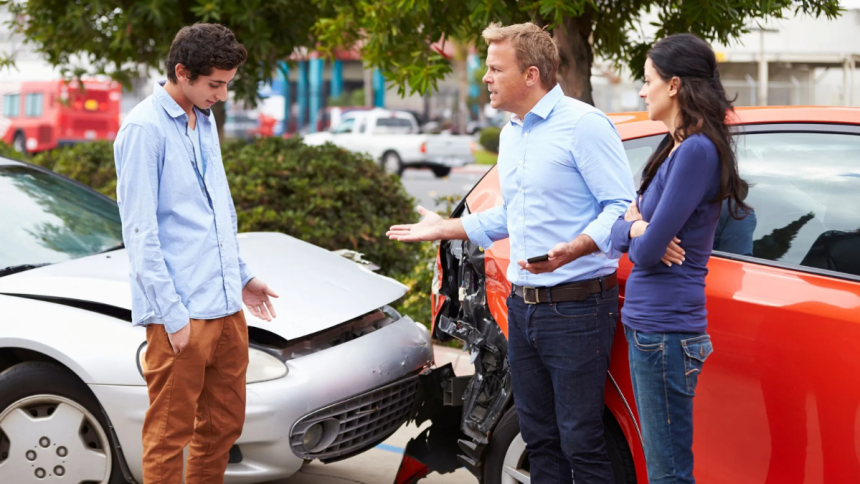When you’re involved in a car accident, what state you’re in matters a lot more than people think. Not just for the scenery or weather, but for how the law treats fault, and whether you can recover compensation for your injuries and losses.
Each U.S. state has its own set of rules around what happens when more than one person is responsible for a crash. And depending on where it happened, the difference between getting full compensation, partial compensation, or nothing at all can come down to just a few percentage points of fault.
Here’s what you need to know about how fault works in the U.S., and how it affects your ability to file a successful personal injury claim.
Who’s at Fault? Depends on the State
States generally follow one of three systems:
- Contributory Negligence (very rare): If you’re even 1% at fault, you get nothing. This is the rule in Alabama, Maryland, North Carolina, Virginia, and D.C.
- Modified Comparative Negligence (most common): You can recover only if you’re less than 50% or 51% at fault. Your payout is reduced by your share of the blame.
- Pure Comparative Negligence (about 12 states, including Arizona and California): You can still recover damages even if you’re mostly at fault, but your payout is reduced by your fault percentage.
These rules make a huge difference in how claims are evaluated and paid out.
Real-World Examples: How It Works in Three States
Arizona: Pure Comparative Negligence
Arizona lets you recover compensation even if you were 99% at fault—but you’ll only receive 1% of your total damages. The state gives you 2 years from the accident date to file a claim.
How fault is determined: Police reports, traffic citations, crash scene photos, witness statements, dashcam footage, and accident reconstructions often come into play. Insurance companies and attorneys evaluate these details to assign a percentage of fault to each driver involved.
For example, if you were rear-ended in Phoenix but were speeding, and you’re found 20% responsible, your $50,000 claim would drop to $40,000.
That’s why working with an experienced Arizona-based car accident attorney can be so valuable. They know how to challenge fault assessments, strengthen your evidence, and make sure shared blame doesn’t keep you from the compensation you deserve, and you’re not overblamed.
California: Also Pure Comparative
California follows the same rule. You can be mostly at fault and still recover something. But watch the clock: there’s a 2-year deadline for injury claims, and 3 years for property damage.
How fault is determined: California law allows courts and insurers to assign fault based on driver behavior, police findings, vehicle damage, surveillance footage, and mobile phone records. Both drivers can share responsibility depending on how the events unfold.
How fault is determined: Investigators will look at factors like speeding, failure to yield, intoxication, or distracted driving. Traffic camera footage and black box data may also be used to establish who was more to blame.
Let’s say a driver in San Diego causes a crash but another driver was also distracted. If our client is found 40% at fault, they can still recover 60% of damages.
New York: Modified Comparative, 51% Rule
In New York, if you’re 50% or less at fault, you can recover. But once you’re 51% or more to blame, you get nothing. The state gives you 3 years to file a personal injury claim.
For example, if you’re in Brooklyn and both drivers are speeding, but you were slightly more reckless, a finding of 51% fault means you walk away with zero compensation. At 49%, you still recover 51% of your losses.
Advice for Drivers After a Crash
- Always document everything. Photos, videos, witness names, police reports—it all matters.
- Get medical help early, even for minor pain. It proves the injury was caused by the crash.
- Be cautious when talking to insurance. Stick to the facts. Adjusters are trained to minimize your claim.
- Know your deadlines. They vary by state. Arizona gives you 2 years; New York gives you 3.
- Call a lawyer early. Especially in comparative negligence states, a good attorney can help argue down your share of fault and maximize what you recover.
The way your state handles fault can change your entire case. In some places, even a tiny mistake on your part could block you from recovering anything. In others, like Arizona, you can still seek compensation even if you share much of the blame.
If you’ve been injured in a crash, especially in a comparative negligence state like Arizona, don’t leave your case up to guesswork. Our attorneys are here to help you understand your rights and fight for every dollar you’re entitled to.
Reach out today if you have questions about how your state’s laws affect your claim.
Lynn Martelli is an editor at Readability. She received her MFA in Creative Writing from Antioch University and has worked as an editor for over 10 years. Lynn has edited a wide variety of books, including fiction, non-fiction, memoirs, and more. In her free time, Lynn enjoys reading, writing, and spending time with her family and friends.















